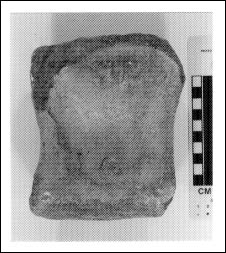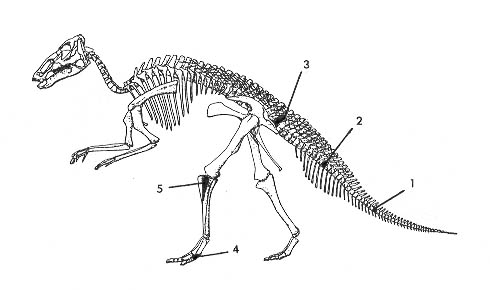by Jonathan R. Bryan, Department of Geological Sciences, University of Tennessee
Recently, several dinosaur bones were rediscovered in the paleontological collections at the University of Tennessee. Since dinosaur remains have never been reported previously from Tennessee, this discovery prompted further investigation.
The bones evidently were acquired from the Tennessee Division of Geology, Nashville, and brought to Knoxville by the late R. Lee Collins, a vertebrate paleontologist at the University of Tennessee, who worked primarily in the 1940s. Collins frequently collaborated with state geologists regarding new finds of vertebrate fossils. The dinosaur bones are labeled simply: “Tennessee Division of Geology, Cretaceous west Tennessee.” The locality and the collector of the material, therefore, remain unknown, but there is little reason to dispute the Tennessee location. Dr. R. E. McLaughlin of the University of Tennessee transcribed many of Collins’ original specimen labels, and has confirmed that the information with the bones was from Collins.
Five bones, identified as hadrosaur (a non-crested, “duck-billed” dinosaur) are in this collection. The sizes of the bone fragments suggest that they are from a single adult hadrosaur. The material [see Figure 1] consists of:
- One posterior caudal vertebra (1)
- One middle caudal vertebra (2)
- A large vertebral centrum from the anterior caudal series (3)
- A proximal phalanx from the third digit of the left pes (4) [see Figure 2]
- A fragment of the left fibula (5), consisting of the proximal end and a portion of the shaft

Figure 2. Proximal Phalanx from third digit of the left pes
Based on the reconstructed fibular length, and using representative hadrosaur proportions (from direct measurements on comparable specimens and published data), the overall length of the Tennessee specimen is estimated at 8–9 meters. The bones are now in the McClung Museum collections, and are on display in the exhibit, The Geology and Fossil History of Tennessee.
Matrix from the bones yielded 21 species of calcareous nannoplankton (microscopic, one-celled algae used in geologic age determination) which indicate a Campanian age (74-84 million years). The Campanian Stage is near the end of the Cretaceous Period, the last Period in the Mesozoic Era. The lithology (sediment type) is a gray, micaceous marl (a marine silty mud containing calcium carbonate), and is very reminiscent of the basal Demopolis formation in Tennessee. The Demopolis in Tennessee was deposited during the late Campanian transgression of the sea up the Mississippi Embayment; this rise in sea level covered parts of west Tennessee. So although the precise collection locality of the bones is uncertain, the age and lithology point to the lower Demopolis Formation as the most probable source of the material.

Figure 1. Hadrosaur skeleton, drawing.
The occurrence of Late Cretaceous dinosaurs in Tennessee is not unexpected. Western Tennessee lies in the same arcuate belt of outcropping Late Cretaceous strata in which dinosaur remains have been reported from Missouri, Mississippi, Alabama, and Georgia. Hadrosaurs are the most common type of Gulf Coast dinosaur, although the remains of marine reptiles, such as turtles and mosasaurs, are more common. Most Gulf Coast dinosaur remains are fragmentary and are found in marine sediments, indicating that whole or partial carcasses were washed out onto the continental shelf and disarticulated by currents and scavengers. Oysters encrusting the specimens indicate that the bones lay on the seafloor for some time prior to burial.